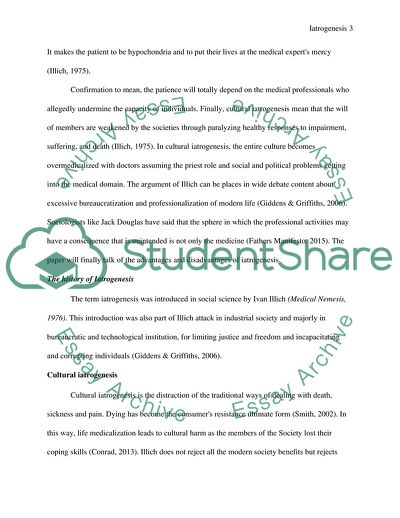Cite this document
(What Might Be Some Social and Cultural Consequences of Iatrogenesis Coursework Example | Topics and Well Written Essays - 4000 words, n.d.)
What Might Be Some Social and Cultural Consequences of Iatrogenesis Coursework Example | Topics and Well Written Essays - 4000 words. https://studentshare.org/health-sciences-medicine/1873295-what-might-be-some-social-and-cultural-consequences-of-iatrogenesis
What Might Be Some Social and Cultural Consequences of Iatrogenesis Coursework Example | Topics and Well Written Essays - 4000 words. https://studentshare.org/health-sciences-medicine/1873295-what-might-be-some-social-and-cultural-consequences-of-iatrogenesis
(What Might Be Some Social and Cultural Consequences of Iatrogenesis Coursework Example | Topics and Well Written Essays - 4000 Words)
What Might Be Some Social and Cultural Consequences of Iatrogenesis Coursework Example | Topics and Well Written Essays - 4000 Words. https://studentshare.org/health-sciences-medicine/1873295-what-might-be-some-social-and-cultural-consequences-of-iatrogenesis.
What Might Be Some Social and Cultural Consequences of Iatrogenesis Coursework Example | Topics and Well Written Essays - 4000 Words. https://studentshare.org/health-sciences-medicine/1873295-what-might-be-some-social-and-cultural-consequences-of-iatrogenesis.
“What Might Be Some Social and Cultural Consequences of Iatrogenesis Coursework Example | Topics and Well Written Essays - 4000 Words”. https://studentshare.org/health-sciences-medicine/1873295-what-might-be-some-social-and-cultural-consequences-of-iatrogenesis.


